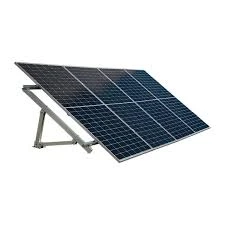10kw solar panel size
Understanding the Size of a 10 kW Solar Panel System
As the world moves towards sustainable energy solutions, solar power has gained immense popularity. Homeowners and businesses alike are considering solar panel installations to reduce energy costs and diminish their carbon footprint. One of the most common queries among those exploring solar power is the size of a solar panel system, especially when it comes to a 10 kW (kilowatt) setup. In this article, we will delve into the size of a 10 kW solar panel system and the factors that influence it.
What is a 10 kW Solar Panel System?
A 10 kW solar panel system is designed to produce approximately 10 kilowatts of electricity under ideal conditions. This type of system is typically suitable for larger residential homes, commercial buildings, or small industrial operations. The production of energy depends on several factors, including the efficiency of the solar panels, the amount of sunlight in the location, and the orientation and angle of the solar panels.
Determining the Size
The size of a 10 kW solar panel system can vary based on the wattage rating of the solar panels. Most residential solar panels produce between 250 to 400 watts per panel. For example, if you choose 300-watt solar panels, you would need approximately
\[ \text{Number of Panels} = \frac{10,000 \text{ watts}}{300 \text{ watts per panel}} \approx 33
.33 \]This means you would need around 34 panels to achieve a 10 kW system.
The physical space required for these panels is another important consideration. Standard residential solar panels generally measure about 65 inches by 39 inches (around 1.7 meters by 1 meter). Consequently, a 10 kW solar panel system comprised of 34 panels would require approximately 600 square feet of roof space. It is essential to assess your roof's orientation, tilt, and shading to maximize the efficiency of the solar panels.
10kw solar panel size

Factors Influencing Size
1. Solar Panel Efficiency Higher efficiency panels produce more energy per square foot. For instance, if you opt for more efficient solar panels rated at 400 watts, you would need fewer panels, thus requiring less space.
2. Geographic Location The amount of sunlight available in your area substantially affects the performance of a solar panel system. Locations with higher solar irradiance will yield more energy and may require fewer panels to reach a 10 kW output.
3. Installation Type The size can also vary based on whether you choose a rooftop installation, ground-mounted system, or a solar carport. Ground systems may require additional space and installation considerations.
4. System Design and Layout A well-designed solar panel layout can optimize the energy production by minimizing shading and maximizing sun exposure. An experienced installer will consider these factors when planning the solar array.
Conclusion
Investing in a 10 kW solar panel system is a pivotal decision that can lead to significant energy savings and environmental benefits. Understanding the factors that influence the size of the system—such as solar panel efficiency, location, and installation type—is crucial for homeowners and businesses contemplating solar energy. On average, you can expect to need around 600 square feet of space for a typical installation, but this can vary based on the specific panels selected and the conditions of your property.
Before making any decisions, it is advisable to consult with a reputable solar energy provider who can help assess your individual needs, provide tailored recommendations, and ensure you are making the most of the available space. By transitioning to solar power, you can take a significant step towards a more sustainable future, harnessing the sun’s energy to power your home or business while contributing to a cleaner planet.
-
Understanding the Advantages of Solar String Inverters for Your Energy SystemNewsApr.29,2025
-
Choosing the Right PV Inverter: A Comprehensive GuideNewsApr.29,2025
-
The Future of Solar Power: Exploring Bifacial Solar PanelsNewsApr.29,2025
-
The Complete Guide to Solar Panels: Efficiency, Cost, And InstallationNewsApr.29,2025
-
The Best Options for Efficiency and Cost-EffectivenessNewsApr.29,2025
-
Harnessing the Power of Off-Grid Solar Inverters for Energy IndependenceNewsApr.29,2025







